Capital:
Ryadh
Currency
Riyal
Best time to visit:
Spring (from mid-March to the end of April) and autumn (from the end of September to the end of November), when the heat is not too intense, are the best seasons for a trip here.
In a word:
Salam Alaykum (good morning)
Vaccines
None
Warnings:
– The sacred cities of Mecca and Medina are accessible only to Muslims therefore show due respect;
– Avoid border areas with Iraq;
– Do not underestimate the temperature differences in the desert.
At the table:
Bread (khobz or pita) is exquisite and present at every meal on the table. Carnivores will appreciate the shawarma, sandiwch stuffed with spit-roasted mutton or chicken, which are sold everywhere.
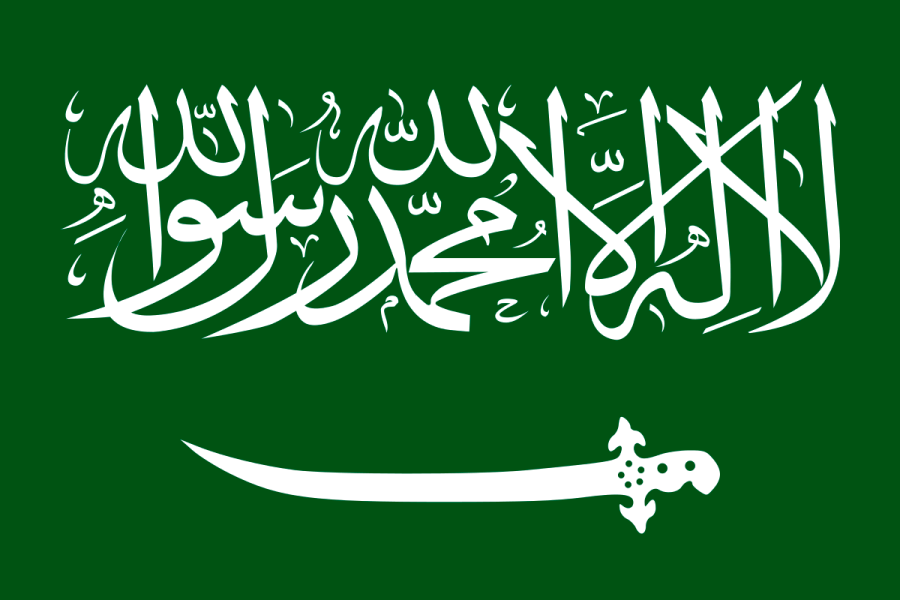

Essential experiences:
Stroll through the ageless alleys of Jeddah; Visit the exterior of the legendary Medina Mosque; Marvel at the spectacular al Ula at sunset; For Muslims: Visit holy Mecca.
Saudi Arabia, birthplace and spiritual seat of Islam. For Muslims, the cities of Mecca and Medina, which witnessed the preachings of the Prophet Mohammed, have no equal in the world. A trip here is a real exploration in a country that has just opened up to international tourism. Let us remember that Saudi Arabia opened its doors in September 2019 and that, until now, it has been used to receiving a single type of tourism, the religious one: in fact, there are three million foreign Muslims who make the pilgrimage to the Mecca.
There is a big difference between Jeddah (much more open) and the rest of Arabia, especially towards women. Until three years ago they could not drive and still had the obligation of the Abaya, now history is constantly changing and the whole society is in a phase of accelerated modernization and globalization so much so that Saudi Arabia is thought of as the future Dubai!
The landscapes are majestic in the west with very beautiful desert and wadi sceneries. The east part is characterized by the Nafud desert and is very rich in history and authentic environments.
The formalities for obtaining a visa are now very simple even if quite expensive however, for those arriving in this country by sea, as happened to us, they can request a "transit by sea" visa at the modest price of about 25 USD instead of 130 USD for those arriving by land or air!
Our suggested itinerary (10 days) | |
three days: | Jeddah (visit Al Balad, old town, walk along Corniche), Mecca (for Muslims only) |
two days: | Yanbu, Medina (visit outside the Prophet's Mosque) |
three days: | Al Ula, Diriyah, Hail |
two days: | Ryadh |
Located on the coast of the Red Sea, it is one of the most important cities in the country, as well as the gateway to Saudi Arabia, since for centuries it was the point where merchants and pilgrims arrived. Even today it is the starting point to then reach Mecca and Medina during the pilgrimage that the Muslim faithful must make at least once in their life.
No Saudi city has been more open to outside influences than this ancient port, traversed by merchants, international artists and Mecca-bound pilgrims.
Lose yourself in the alleys of Al Balad, the historic center of Jeddah, declared a World Heritage Site by UNESCO, is one of the most atmospheric neighborhoods in the country, with narrow lanes between old merchants' houses leading to spice-scented souks and glittering bakeries traditional. Empty spaces have become quirky cafes or art galleries.
Stroll along the Corniche: Jeddah's 4.2km Waterfront has been transformed into a place of piers, swimming bays, restaurants and lush walking and cycling paths.
Enchant yourself in front of the King Fahd fountain, the highest in the world with its 300 meters and with its large jet of water turned on until midnight and visible throughout the city.
Because the fountain pumped seawater from the Red Sea, rust and corrosion were particularly feared by the builders. A filtering system was created with which, before reaching the pump, the water passed through several filters to purify it from dirt, sand and organic substances. The fountain was then illuminated by 500 high-brightness LEDs designed to withstand the continuous fall of thousands of tons of water.

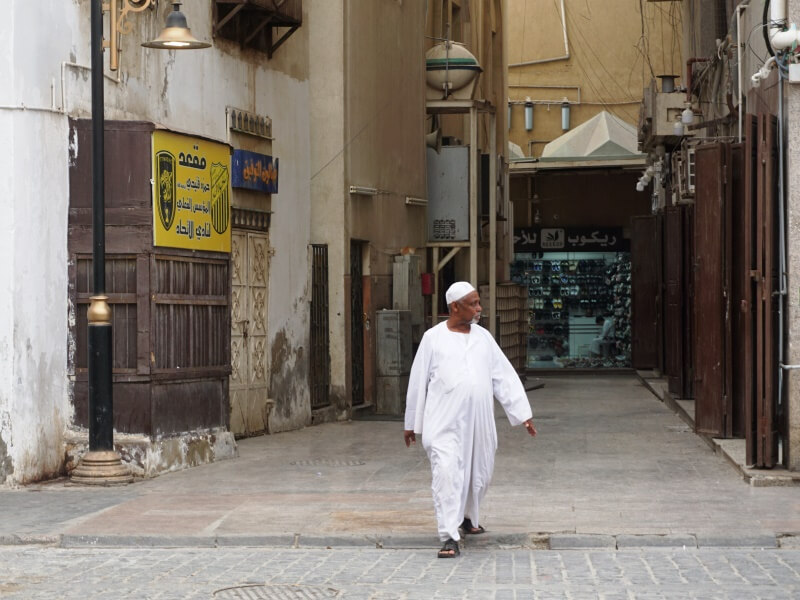

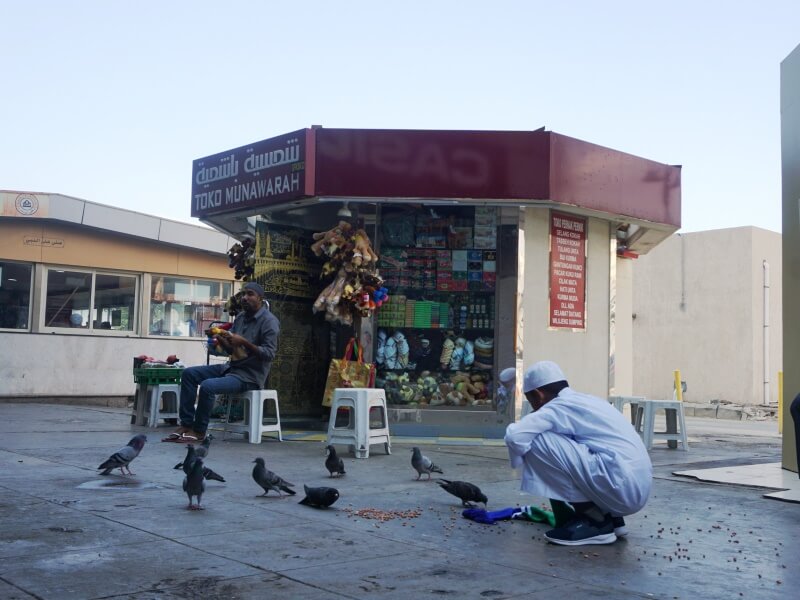
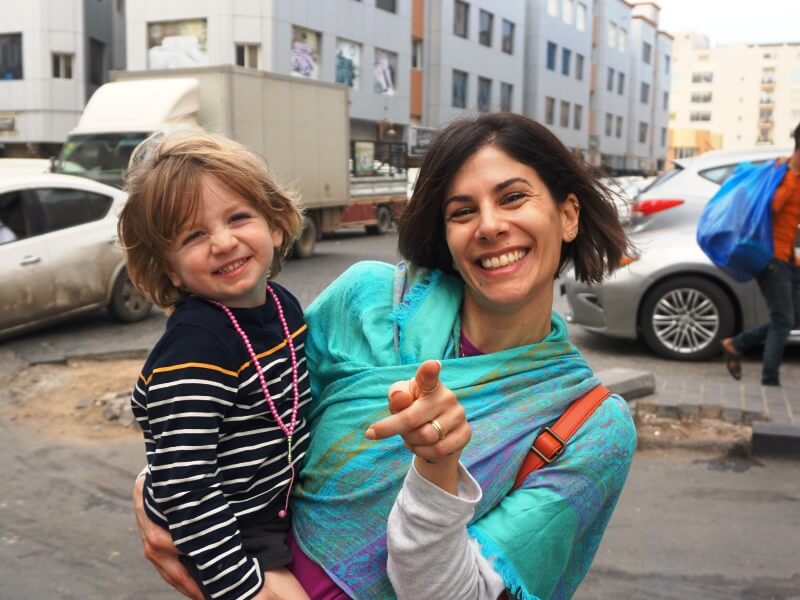

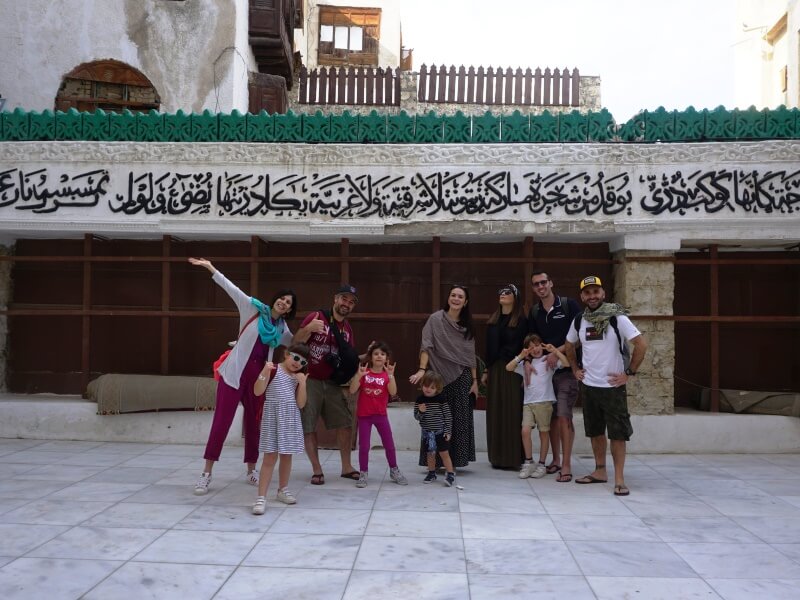
For Muslims, the opportunity to visit Mecca is the greatest blessing. This is the holiest city in Islam: the birthplace of the Prophet Muhammad and the city where the Koran was first revealed to him. It is also a fixture in the daily life of observant Muslims, who make their way to Mecca to pray five times a day. The annual Hajj pilgrimage to the city is one of the five pillars of faith but millions of people travel to the city throughout the year to perform even the shortest Umrah pilgrimage.
The vast majority of visitors are pilgrims who spend as much time as possible within the opulent Grand Mosque complex, which is a bustling hive of activity at all hours of the day.
Second port in Arabia after Jeddah, it floats on oil. A third of its territory is occupied by mammoth refineries – visible from the street, but not photographable or approachable – a symbol of Saudi power.
The refineries are flanked by a modern petrochemical complex and a large desalination plant that allows the city to survive the aridity of the desert using water from the Red Sea.
The only area really worthy of a visit is the old one, adjoining the port, where there is a small tourist souk and the remains of the house of Lawrence of Arabia, which has been renovated.
Medina is the second holiest city of Islam, easily reachable from Yanbu. We hired a private van with Saudi Silk Road and in a couple of hours of monotonous road we arrived in front of this sacred city!
Medina is a key destination for millions of pilgrims who travel to Saudi Arabia for Hajj or Umrah.
The city revolves around the Al Masjid an Nabawi, also known as the Prophet's Mosque, which was built by the Prophet himself and is also where he is buried.
This is a splendid mosque featuring 10 minarets, which seats 1 million visitors and is open 24 hours a day. The Prophet's tomb is located under the single green dome of the mosque, in the southeast corner.
According to tradition, the prayers said here are never rejected.
Out of respect we limited ourselves to admiring it from the outside, however I admit that the atmosphere you breathe is very suggestive.
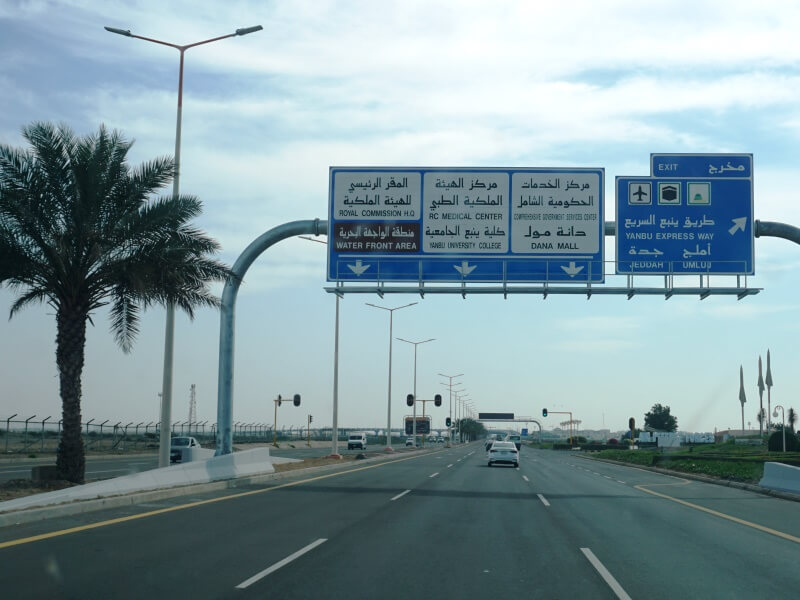
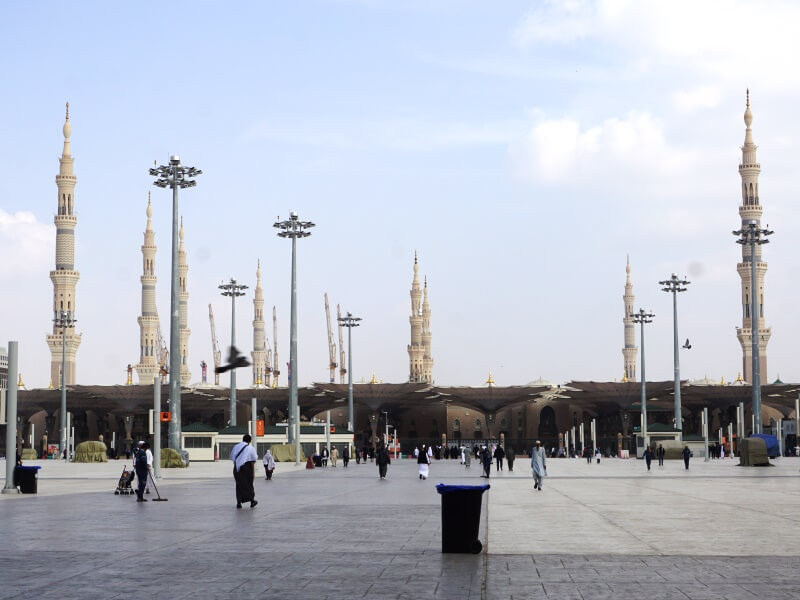
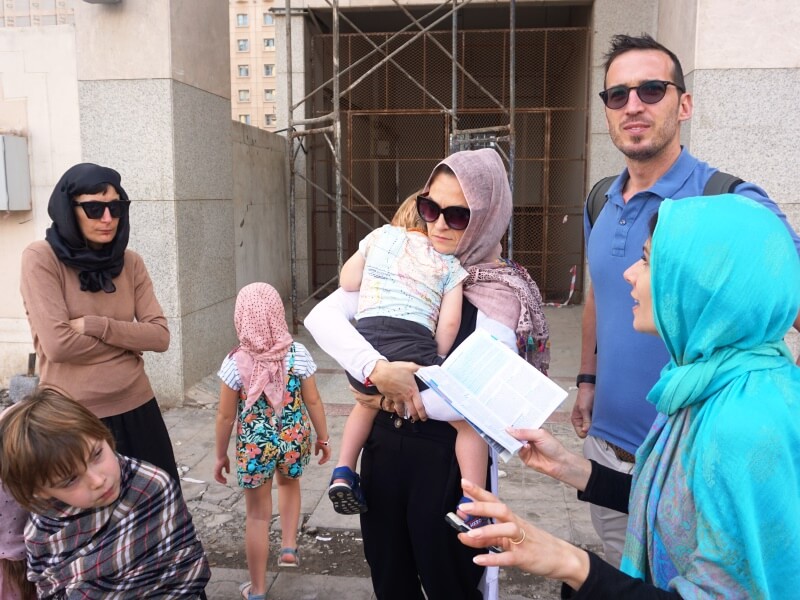

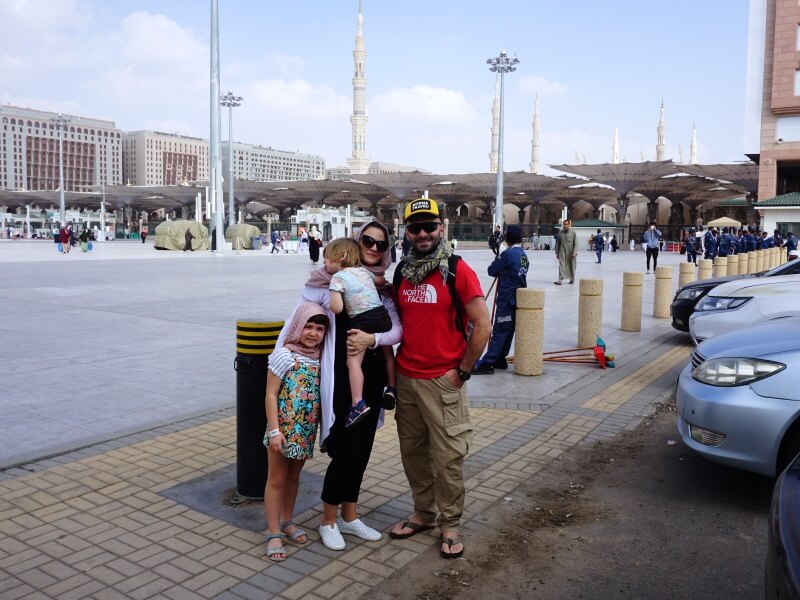
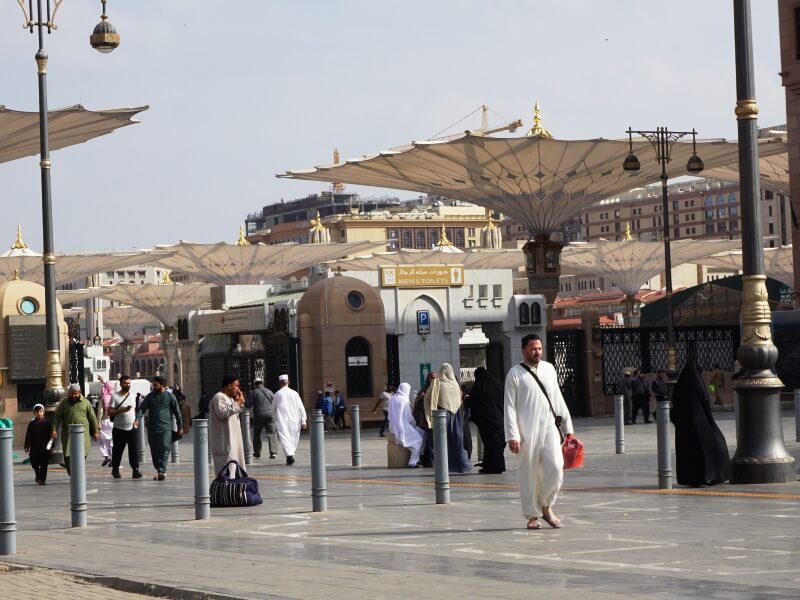
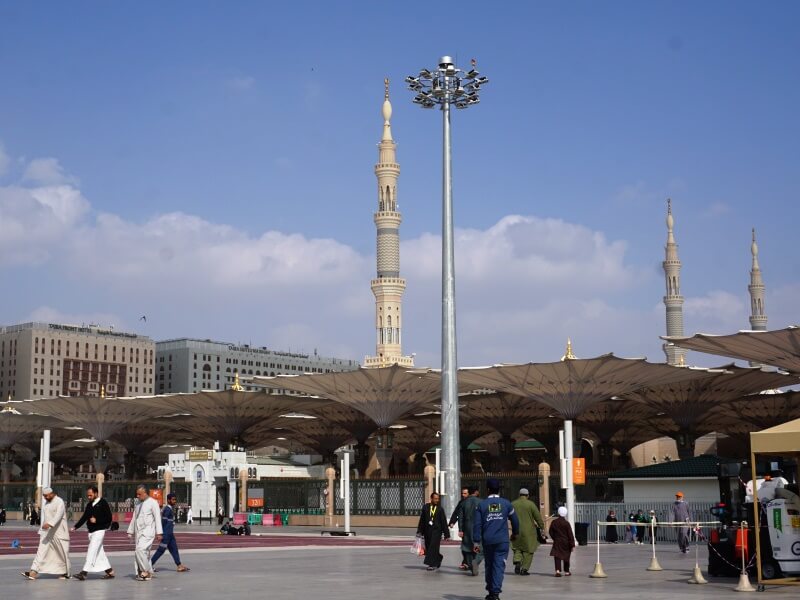
Not far away is the magnificent Qubāʾ mosque, considered the oldest mosque in the world. The first stone was laid by the Islamic prophet Mohammed during his hegira from Mecca to Medina. It was then completed by his companions.
Since Saudi Arabia is a Muslim country, it is advisable to dress in respect for the local culture.
It is recommended for men to wear long, tear-free trousers and T-shirts, even with short sleeves.
Women, on the other hand, will have to opt for long trousers or skirts, also without rips, and shirts, even with short sleeves, but not low-cut or tight-fitting. In general it is not necessary to keep the face covered, but the visit to Medina is an exception where it is necessary to have the Abaya, a long black dress that reaches the ankles with a veil that completely covers the head.
Al Ula is a stunning example of the country's wonderful heritage. Built around its famous oasis and framed by sandstone mountains.
The windswept expanses of Al Ula are a veritable living museum spanning hundreds of years of Arab history. Visit the rock tombs of Hegra, the ancient capital of Dadan and its lion tombs, the 'open library' of rock inscriptions at Jabal Ikmah, the labyrinth of mud brick houses in the 12th century Al Ula old city, the 18th century Hegra fort, the Hijaz railway station and much more.
The history in this area has very ancient origins. In fact, the first human settlement dates back to 200,000 years ago! This extraordinary place is a succession of granite rocks that emerge from the sandy ground. The vision of him is very reminiscent of that of Wadi Rum, in Jordan. In the background, a myriad of rock formations with bizarre shapes, including the elephant rock.
Diriyah is the birthplace of the country and a symbol of the beauty, generosity and resilience of the Saudi nation and its people. Founded in 1446 in a region surrounded by fertile farmland on the banks of Wadi Hanifa, Diriyah soon became the cultural center of the Arabian Peninsula.
Within Diriyah is the UNESCO World Heritage Site of Al-Turaif. The city of Al-Turaif, built in 1744, is recognized as one of the largest mud-brick cities in the world.
The rules and prohibitions to be observed are different but often derive from common sense:
Hail was once the capital of all of the Arabian Desert. Today it is the capital of the homonymous north-central region of Saudi Arabia, as well as a popular stop during the pilgrimage to Mecca. The city of Hail is also known for hosting international events, including a Desert Festival celebrating the culture of the area and the Hail International Rally.
Located in the hinterland of the country, this city is the capital and seat of the government of Saudi Arabia. Its name derives from "riad" which means "garden" and in fact the city is full of parks and green areas. The most striking aspect is its mix of antiquity and modernity: walking through the streets of the city you can admire old houses and buildings near luxury boutiques, shopping centres, buildings with modern architecture and immense skyscrapers.
The main street of the city is King Fahd Road, the heart of Saudi business where Riyadh's main futuristic shopping centers are located. Alternatively, you can go to the Deira Gold Souk. This is the largest market in the city, but be aware that doing business is really hard!
Don't forget to go up to the panoramic observatory of the Kingdom Centre, the symbol of the city and of the entire nation, a very tall skyscraper that houses a shopping centre, apartments and even a luxury hotel. To take a step back into the past, however, we suggest you visit the Musmak fortress, now home to the museum on the history of the country.
Error: No feed found.
Please go to the Instagram Feed settings page to create a feed.
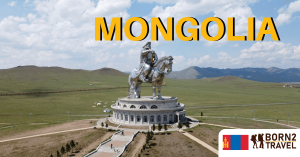
Mongolia Capitale:Ulan Bator Moneta:Tugrik Periodo migliore: Il periodo migliore per